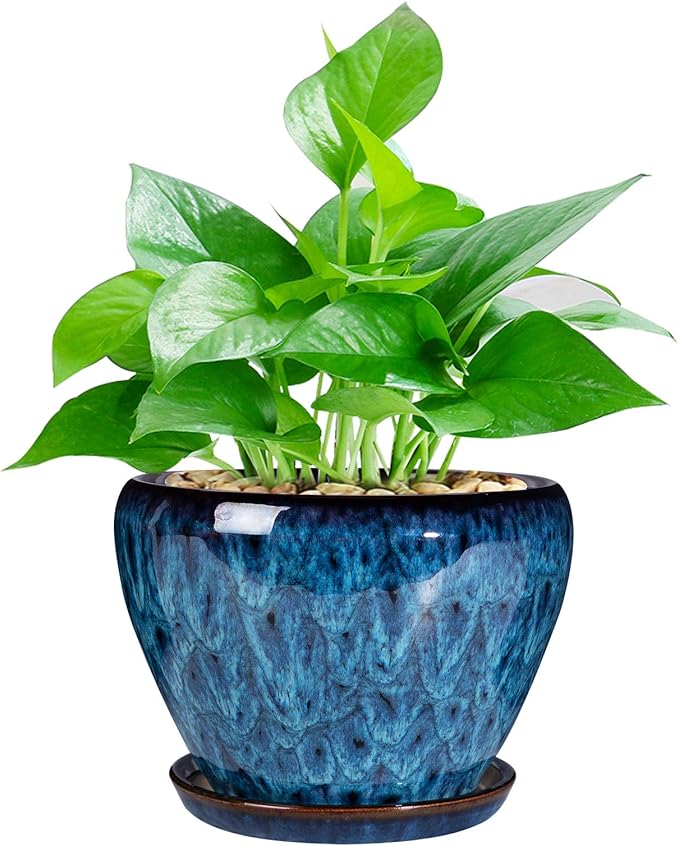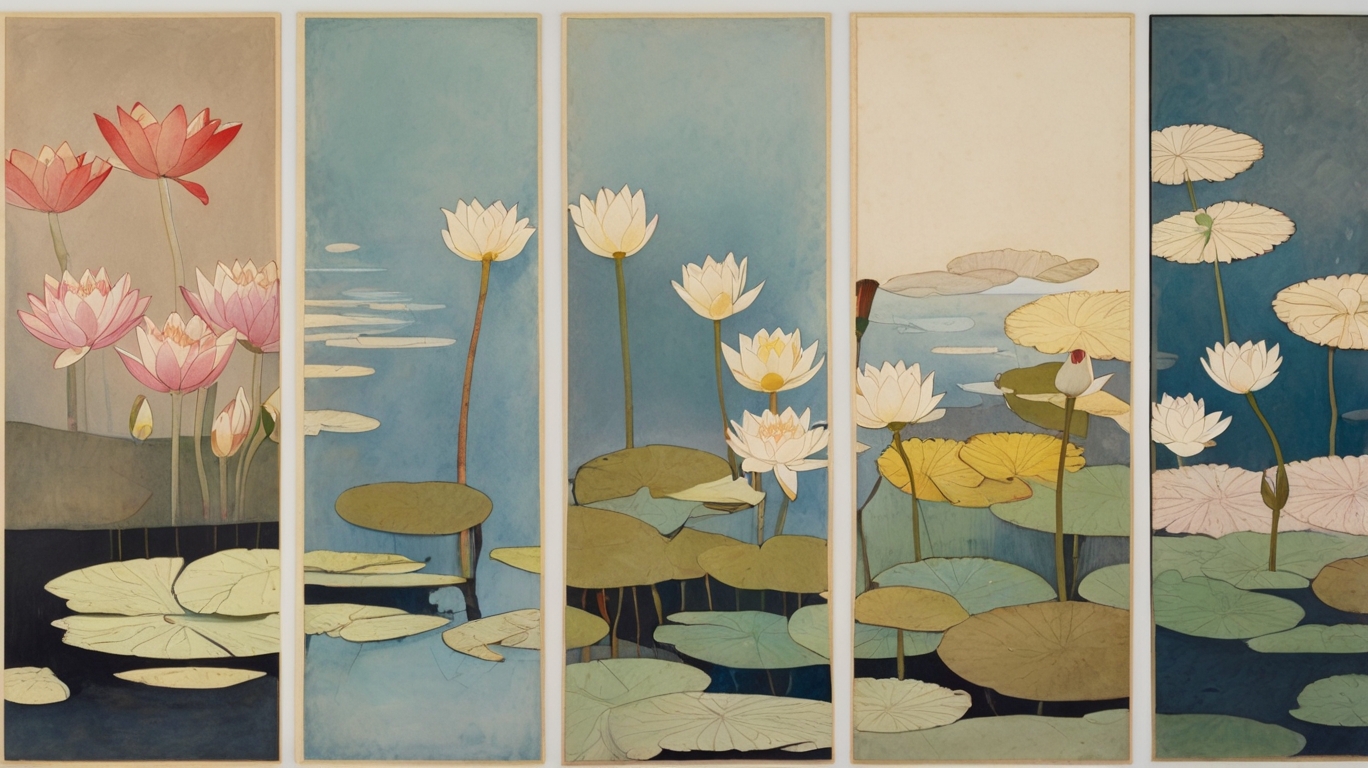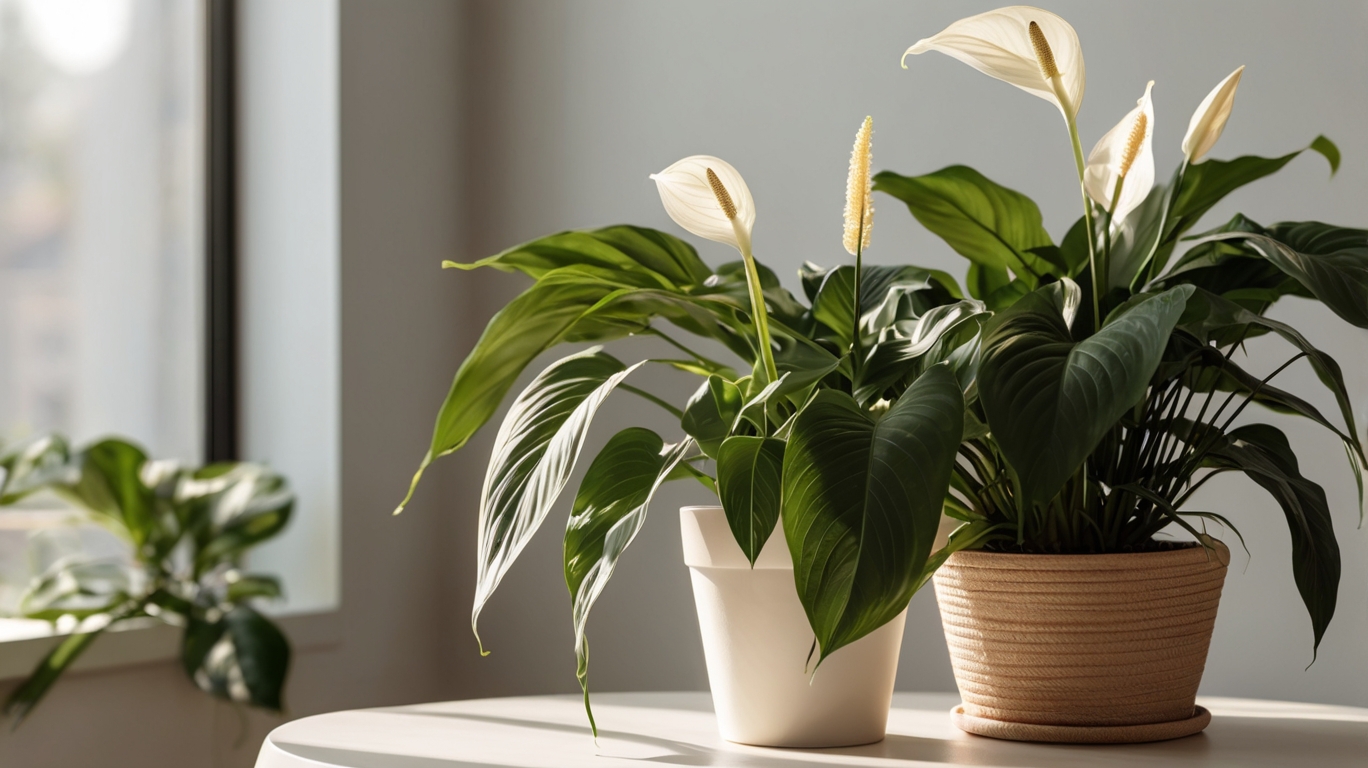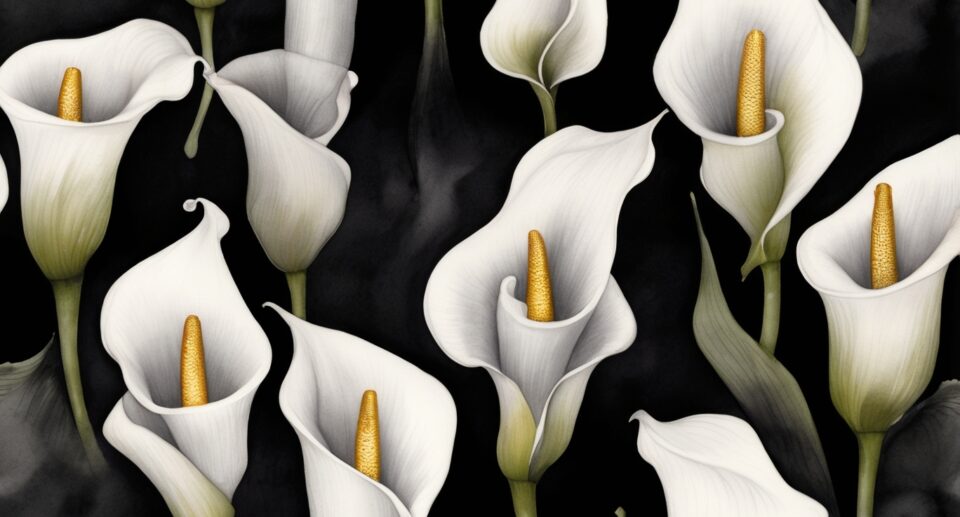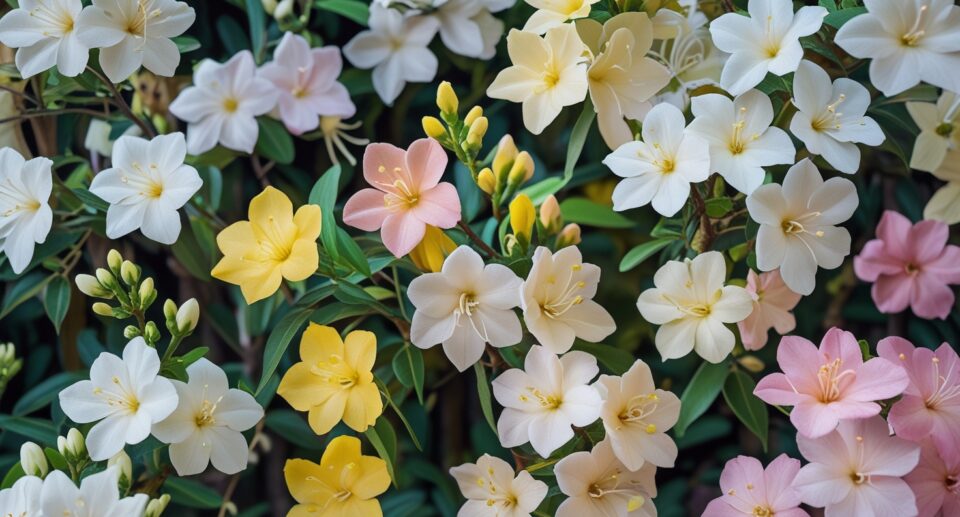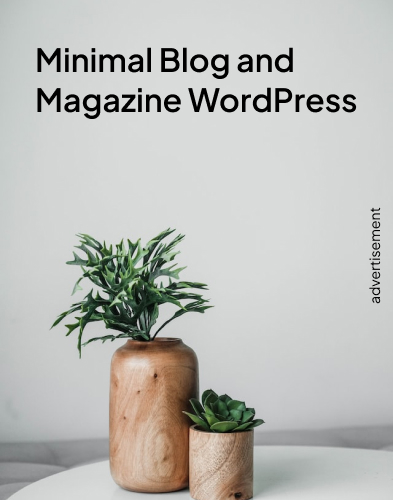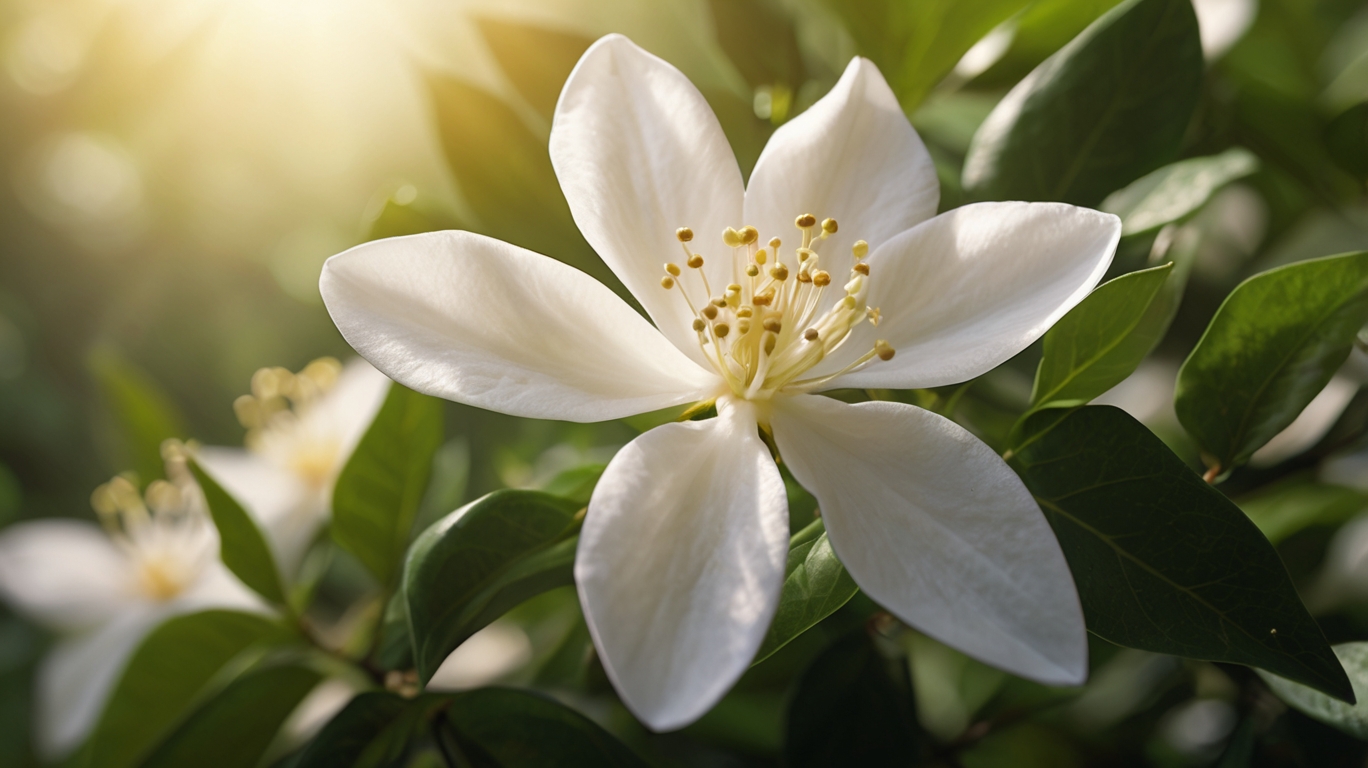5 Delightful Tips for Recognizing Jasmine Flowers: A Beginner’s Guide

Introduction to Jasmine Flowers: A Brief Overview
Jasmine flowers are renowned for their fragrant and delicate nature, captivating the senses and inspiring cultures worldwide. Found predominantly in tropical and subtropical regions, jasmine belongs to the genus Jasminum, which includes over 200 species. These flowers are widely celebrated not only for their aesthetic appeal but also for their symbolic significance, often representing purity, love, and respect across various traditions.
The blossoms typically grow as part of shrubs or climbing plants, making them versatile for gardens, trellises, and ornamental purposes. Jasmine flowers are small, star-shaped, and usually white; however, select varieties feature yellow or pale pink blooms. Their enchanting fragrance, strongest during the evening hours, is a key factor that sets jasmine apart from other floral species.
There are several notable varieties of jasmine. Some of the most popular include:
- Common Jasmine (Jasminum officinale): Known for its white flowers and rich scent, this species is often cultivated for perfumes and essential oils.
- Arabian Jasmine (Jasminum sambac): Revered in Asia, its highly aromatic flowers are traditionally used in teas and ceremonial garlands.
- Wild Jasmine (Jasminum fruticans): Producing vibrant yellow flowers, this variety thrives in Mediterranean climates.
The cultivation of jasmine is suited to warm conditions with well-drained soil. These plants typically require ample sunlight, although some species tolerate partial shade. Regular pruning encourages fuller growth and prolonged blooming periods.
Jasmine’s role extends beyond gardens, finding use in cosmetics, cuisine, and traditional medicine. Its essence is a prized component in perfumery, while jasmine tea remains a popular beverage worldwide. Understanding the basic characteristics of jasmine flowers enables gardeners and enthusiasts alike to fully appreciate their beauty and significance.

The Different Types of Jasmine Flowers Around the World
Jasmine flowers are renowned for their sweet fragrance and delicate beauty. These flowers belong to the genus Jasminum, and there are over 200 species that vary in appearance, cultivation needs, and regional distribution. Understanding the different types can help enthusiasts recognize their unique characteristics.
Popular Types of Jasmine Flowers
The most commonly recognized species are cultivated for their ornamental beauty and aromatic properties. Some of the most prominent types include:
- Common Jasmine (Jasminum officinale) Native to Asia, this is one of the most widely grown jasmine species. Known for its fragrant white flowers, this variety blooms from spring to fall and thrives in sunny, well-drained locations.
- Arabian Jasmine (Jasminum sambac) A tropical species found in Southeast Asia, this jasmine is known for its rich fragrance and tiny, white, star-shaped blossoms. It is often used in perfumes, teas, and religious ceremonies.
- Pink Jasmine (Jasminum polyanthum) Hailing originally from China, this fast-growing climber features pale pink buds that open into white flowers. It is prized for its vigorous growth and potent scent.
Lesser-Known Jasmine Species
Several varieties are less well-known yet have unique botanical features. These include:
- Wild Jasmine (Jasminum fruticans) A drought-resistant variety native to Mediterranean regions, this species produces yellow flowers and grows as a small shrub.
- Italian Jasmine (Jasminum humile) Found in the Himalayas and Italy, it is a cheerful plant with yellow blossoms. Italian Jasmine can thrive in cooler climates compared to other species.
- Winter Jasmine (Jasminum nudiflorum) Unlike other jasmine types, Winter Jasmine blooms during colder months. It produces bright yellow flowers on slender green stems and is native to China.
Geographical Distribution
Jasmine flowers are globally diverse, with certain species thriving in tropical and subtropical climates. While some, like Arabian Jasmine, prefer humid conditions, others, such as Wild Jasmine, adapt well to arid environments. Their wide distribution has made jasmine an important cultural symbol in India, the Philippines, Indonesia, and beyond.
Jasmine species vary widely, yet their shared characteristics—fragrance and elegant blooms—make them universally recognized and celebrated.
The Anatomy of a Jasmine Flower: Petals, Stem, and Fragrance
Jasmine flowers are admired for their elegance and intoxicating aroma, but understanding their anatomy can deepen appreciation for these blooms. Each part of the jasmine flower plays a distinct role, contributing to its visual charm and characteristic fragrance.
Petals: The Beauty of Symmetry
The petals of jasmine flowers are one of their most recognizable features. Typically white, although some species may showcase pale yellow hues, the petals are delicate and slightly elongated. They are arranged in a star-like pattern, giving the flower its signature appearance. The smooth texture of the petals aids in reflecting sunlight, enhancing their brightness. Their soft, waxy surface also helps retain moisture, ensuring the flower remains hydrated and fresh. The number of petals often varies depending on the jasmine species, but most commonly, there are five or more petals. This symmetry forms the aesthetic core of the flower, appealing to both human admirers and pollinating insects.
Stem: A Strong Yet Flexible Support
The stem of a jasmine flower is slender and sometimes vine-like in nature. It serves as the supporting structure for the flowers and buds that grow in clusters. Jasmine stems have a green, herbaceous surface with veins that conduct water and nutrients from the roots to the flower. Their flexible but sturdy composition enables the jasmine plant to climb or sprawl over various surfaces, making them ideal for garden trellises or fences. Over time, certain jasmine stems may harden and become woody, depending on the species and growth conditions. This adaptation strengthens the plant as it reaches maturity.
Fragrance: The Signature Essence
The fragrance of jasmine flowers is what truly sets them apart. Each bloom produces a rich, sweet scent that intensifies during the evening hours, a characteristic known as nocturnal fragrance emission. The aromatic compounds responsible for this scent are stored within minute oil glands in the petals. This fragrance acts as a natural attractant for pollinators such as moths and bees, ensuring the plant’s reproductive success. The essential oil extracted from jasmine flowers is widely used in perfumes, aromatherapy, and cosmetics, reflecting its importance far beyond the garden. The potency and appeal of this fragrance make jasmine flowers a symbol of beauty and serenity across cultures.
Understanding the anatomy of jasmine flowers highlights their design and functionality within nature. Each component contributes uniquely to their allure, making them a favorite among gardeners, designers, and enthusiasts.
Color Variations of Jasmine Flowers: White, Yellow, and Beyond
Jasmine flowers are renowned for their captivating beauty and diverse color palette, with numerous varieties exhibiting distinct shades. While white is the most commonly recognized color, highlighting the plant’s purity and elegance, jasmine comes in other hues that carry their unique charm and significance.
White Jasmine
White jasmine remains the most iconic of all jasmine varieties, symbolizing purity, love, and spirituality in many cultures. These flowers often feature small, star-shaped blossoms with a delicate fragrance. Common species, such as Jasminum officinale (Common Jasmine) and Jasminum sambac (Arabian Jasmine), predominantly display white blooms. Their luminous, pristine petals often stand out beautifully against the glossy green foliage.
Yellow Jasmine
Yellow jasmine varieties add warmth and vibrancy to gardens and landscapes. Species like Jasminum humile, also known as Italian Jasmine, produce bell-shaped yellow flowers. Unlike some of their white counterparts, yellow jasmine exudes a sweet but milder fragrance. Its sunny tone makes it a preferred choice for adding cheerful accents, especially in warm, sunlit regions. It is important to note that certain yellow-flowered plants, like Carolina Jasmine (Gelsemium sempervirens), are not true jasmines, although they bear similar floral traits.
Beyond White and Yellow
While white and yellow dominate, some jasmine hybrids and lesser-known varieties offer variations like pinkish or cream-hued blossoms. For instance, Jasminum mesnyi, commonly called Primrose Jasmine, produces pale yellow, almost white flowers that maintain a subtle transition between shades. Additionally, the foliage of some jasmine plants may further enhance the visual appeal, with variegated leaves adding depth and contrast to the overall display.
The diversity in jasmine colors not only enriches aesthetic possibilities but also broadens their application in symbolism and decor. Combining these hues provides gardeners and flower enthusiasts with a versatile plant that sparkles across settings.
How Jasmine Flowers Bloom: Seasonal and Growth Patterns
Jasmine flowers exhibit distinct growth behaviors and blooming cycles that are influenced by environmental factors, seasonal changes, and their biological structure. These patterns are important for understanding the development and care of jasmine plants.
Seasonal Blooming and Environmental Conditions
Jasmine plants typically bloom during warm seasons. For many varieties, flowering begins in late spring and continues through summer. The blooming period can extend into early autumn in regions with mild temperatures. Tropical and subtropical climates, where jasmine thrives naturally, promote longer flowering cycles due to consistent warmth and humidity. However, in cooler regions, these plants may require specific care, such as protection from frost, to sustain their growth and bloom properly.
Growth Stages of Jasmine
- Young Plant Stage: Jasmine plants, particularly those propagated from cuttings, go through a developmental phase where they focus on establishing roots and stems. During this stage, flowers are unlikely to appear.
- Active Growth Phase: As the plant matures, leaves and stems grow more robust. With adequate sunlight, well-draining soil, and routine care, jasmine transitions to a vigorous flowering stage.
- Flowering Phase: Bud formation precedes blooming, with jasmine flowers typically opening at night or early morning. The timing ensures optimal pollination, as many jasmine species rely on nocturnal pollinators.
Key Factors Influencing Blooming
Several factors impact the growth and blooming cycles of jasmine:
- Light: Jasmine requires full to partial sunlight for healthy growth and abundant flowering. Insufficient light results in fewer flowers.
- Temperature: Ideal temperatures range between 60°F to 75°F (15°C to 24°C) for most jasmine varieties.
- Watering: Consistent, moderate watering keeps the soil moist, promoting bloom development without over-saturation.
- Pruning: Regular pruning, especially after flowering, helps eliminate dead stems and encourages the growth of new buds.
Understanding these factors allows gardeners to create optimal conditions for jasmine flowers to thrive.
Distinctive Traits of Jasmine Flowers: Identifying Their Unique Features
Jasmine flowers can be distinguished through a series of notable characteristics that set them apart from other flowering plants. Their unique features are primarily evident in their appearance, aroma, and growth habits, making them a favored choice for gardens and ornamental uses.
Appearance
Jasmine flowers typically exhibit small, star-shaped blossoms that showcase a pure white hue or, in some varieties, pale yellow shades. The petals are smooth and slightly elongated, often arranged symmetrically to give the flower its iconic form. The plant’s green foliage complements its blooms, featuring lance-shaped leaves with a glossy finish.
Fragrance
One of the most defining traits of jasmine flowers is their perfume-like aroma. Often described as sweet, exotic, and intoxicating, their scent becomes stronger during the evening. This characteristic is particularly prominent in night-blooming jasmine (Jasminum sambac) varieties, which release their fragrance when the sun sets.
Growth Patterns
Jasmine plants can grow in various forms, including as shrubs, climbing vines, or ground-covering plants, depending on the species. The vines are often used to adorn trellises and walls, while shrub-like varieties are cultivated for hedges. They thrive in warm climates and prefer well-drained soil.
Blooming Seasons
The timing of jasmine blooms can vary depending on the specific type. For instance, common jasmine (Jasminum officinale) generally blossoms during late spring and summer, while winter jasmine (Jasminum nudiflorum) produces flowers during colder months.
Floral Adaptations
Certain species exhibit adaptations such as night blooming to attract nocturnal pollinators, emphasizing their role in diverse ecosystems. Additionally, jasmine flowers often rely on their fragrance to enhance pollination success.
By understanding these distinct traits, one can easily identify jasmine flowers and appreciate their unique beauty and diversity.
Close-Up Visualization: The Detailed Aesthetic of Jasmine Flowers
When observed closely, jasmine flowers reveal a world of intricate details that make them one of nature’s most captivating blooms. The petals, often arranged in a distinct pinwheel or star-like formation, exhibit a smooth, velvety texture that seems almost luminous in sunlight. Their often pure white color, sometimes tinged with shades of cream or yellow, enhances their delicate and ethereal appearance. In certain species, such as Jasminum sambac, the flowers may also display a double-layered arrangement, adding to their ornamental beauty.
The flowers are typically small in size, averaging around 1 to 2.5 centimeters in diameter. Despite their modest dimensions, their symmetrical design ensures an eye-catching charm. A closer look reveals that each petal emanates outward in rhythmic precision, creating a harmonious aesthetic that appeals to gardeners and flower enthusiasts alike. The slender green stems of the jasmine provide a fitting stage for the blossoms, further emphasizing their dainty elegance.
Jasmine flowers also stand out due to their perpetual association with fragrance. Large concentrations of minute, glandular structures located on the petals are responsible for producing the aromatic oils that lend jasmine its distinctive sweet scent. This perfume is most enchanting during evenings and early mornings, when it becomes more potent, enhancing the sensory experience of observing these blooms.
Varieties of jasmine showcase slight variations in petal structure and coloration. For example, the pink-hued buds of Jasminum polyanthum open into pristine white flowers, while Jasminum auriculatum features more elongated petals. Additionally, the contrast between the snow-like petals and the bright green sepals creates a striking visual interplay that accentuates their aesthetic appeal.
The interplay of symmetry, texture, and subtle color variations reveals why jasmine flowers are often equated with beauty, purity, and serenity in cultures worldwide.

Where Jasmine Flowers Thrive: Geographic and Cultivation Insights
Jasmine flowers flourish in diverse climates and regions, favoring conditions that support their intricate blooms and distinct fragrance. These plants are native to tropical and subtropical areas, predominantly found across South Asia, the Middle East, and parts of East Asia. However, their versatility allows them to thrive in various parts of the world with the right care and conditions.
Preferred Climate and Growing Conditions
Jasmine plants typically favor warm and humid climates, making them ideal for regions with consistent sunlight and moderate rainfall. They are best suited for USDA hardiness zones 8 through 11, where winters remain mild, and frost is minimal. These flowers require well-drained soil enriched with organic matter, ensuring adequate moisture retention without waterlogging. Warm temperatures, ranging between 60°F and 85°F, encourage robust growth and bloom cycles.
Geographic Distribution
Jasmine species such as Jasminum sambac, commonly known as Arabian jasmine, are widely cultivated in countries like India, the Philippines, and Indonesia. Mediterranean jasmine (Jasminum officinale) is popular across Europe, thriving in regions with temperate climates. In the Americas, jasmine varieties like Jasminum polyanthum are often grown as ornamental plants in gardens and homes. In certain African and Australian regions, jasmine species adapt to local environmental conditions and are cultivated for their decorative and sensory appeal.
Factors Influencing Cultivation
Successful jasmine cultivation hinges on maintaining optimal environmental conditions and proper care. These plants benefit from full sunlight exposure for at least four to six hours daily, although partial shade is acceptable for certain varieties. Regular watering during dry periods ensures healthy growth, but overwatering should be avoided to prevent root rot. Gardeners often use organic compost to provide essential nutrients that promote vibrant flowers.
Jasmine flowers also have cultural significance in numerous regions, often grown for religious ceremonies, perfumes, and teas. Their cultivation methods vary slightly between local practices, but the fundamental requirements for sunlight, water, and well-draining soil remain consistent worldwide. Transitioning to colder seasons, jasmine may need protective measures such as indoor placement or frost covers, ensuring survival during unfavorable weather conditions.
Symbolism and Cultural Significance of Jasmine Flowers
Jasmine flowers have held a prominent place in numerous cultures and traditions across the globe, symbolizing purity, beauty, and love. These delicate blooms have transcended their physical form to embody deep meanings and traditions, often playing a role in ceremonies, art, and daily rituals.
Symbolism of Jasmine Flowers
Jasmine is frequently associated with purity due to its pristine white color and gentle fragrance. In many cultures, it represents new beginnings and spiritual enlightenment. Its association with love and sensuality is especially pronounced, as the flower’s intoxicating scent is often regarded as an aphrodisiac. Jasmine is also connected to humility and grace, conveying messages of modesty despite its striking beauty.
In terms of numerology and spiritual beliefs, jasmine plays a role as a symbol of inner strength, warmth, and positive energy. Across literature and folklore, jasmine is often referenced as a token of affection and selfless love, illustrating its universal appeal.
Cultural Significance
In Southeast Asia, jasmine flowers are deeply integrated into religious and cultural practices. In countries like India, jasmine holds immense spiritual importance, commonly used in weddings and religious ceremonies to symbolize divine blessings and unity. Women often adorn their hair with jasmine garlands, considering it an emblem of beauty and prosperity.
In Indonesia and the Philippines, jasmine, particularly varieties like Sampaguita, serves as national symbols. It emerges as a sign of loyalty, respect, and dedication. The flower is used in traditional rituals, woven into meaningful narratives, and even exchanged as a gesture of sincerity.
In Western cultures, jasmine resonates with themes of romance, often incorporated into perfumes and decorative arrangements. Its connection to evening serenity has made it a popular choice for gardens and indoor environments alike.
Jasmine’s multicultural and timeless appeal stems from both its physical attributes and the deep emotional resonance it carries across different societies.
Conclusion: Why Jasmine Flowers Captivate the Senses
Jasmine flowers possess a unique allure that captivates the senses through their striking appearance, enchanting fragrance, and cultural symbolism. Their delicate, star-shaped blossoms showcase a purity and simplicity that invite admiration and emotional resonance. The creamy-white tones of most jasmine flowers are symbolic of innocence and modesty, while their occasional pastel blush introduces subtle diversity, enhancing their visual appeal.
Their fragrance, often described as sweet, musky, and exotic, plays a pivotal role in their charm. The scent varies across jasmine varieties, ranging from richly intense to softly understated, making the fragrance widely cherished in perfumes, essential oils, and personal care products. The aroma of jasmine has been associated with promoting relaxation, reducing stress, and uplifting the mood, which explains its usage in aromatherapy and wellness practices.
Cultural significance deepens the enchantment of jasmine flowers. In many parts of the world, jasmine holds profound symbolic value. It signifies love, purity, and sensuality in some cultures, while in others, it is revered for its connection to spirituality and divine offerings. Jasmine is a traditional element in weddings, religious ceremonies, and festivals, cementing its presence in celebrations of human connection and transcendence.
Their appeal extends beyond symbolism and fragrance to their versatility. Jasmine thrives in gardens, patios, and balconies, adapting to diverse climates and spaces. The vines and shrubs add elegance to landscapes, making jasmine a preferred choice among garden enthusiasts. Furthermore, the flowers are dried and brewed into aromatic teas, embraced in culinary traditions across regions.
The captivating qualities of jasmine flowers lie in this combination of visual beauty, sensory intrigue, and cultural depth. They inspire admiration, elevate moods, and nurture connections that transcend time and space.
Click the link below to buy “FLOWER Retro Wooden Stand Plant Terrarium with 3 Bulb Glass Vases for Hydroponic Home & Office Décor”
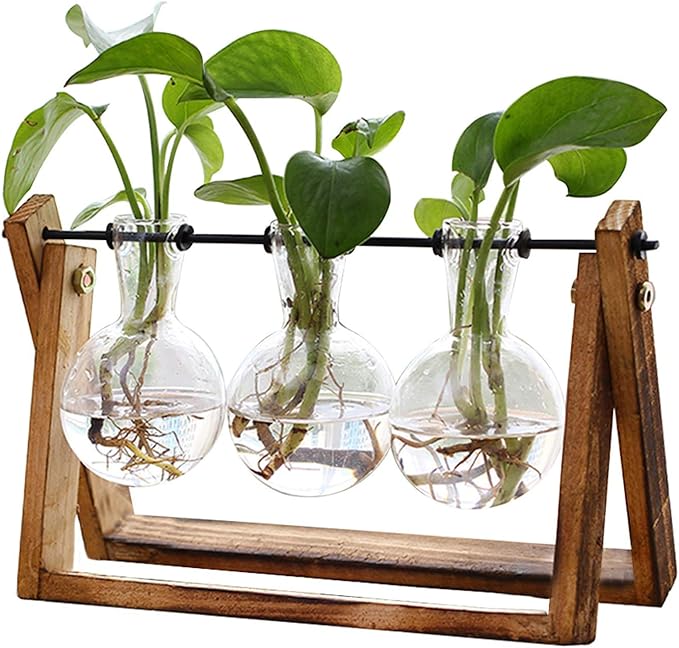
“Click the link below to buy “6-inch modern ceramic planter with glaze, drainage hole, and saucer for indoor & outdoor plants.”
